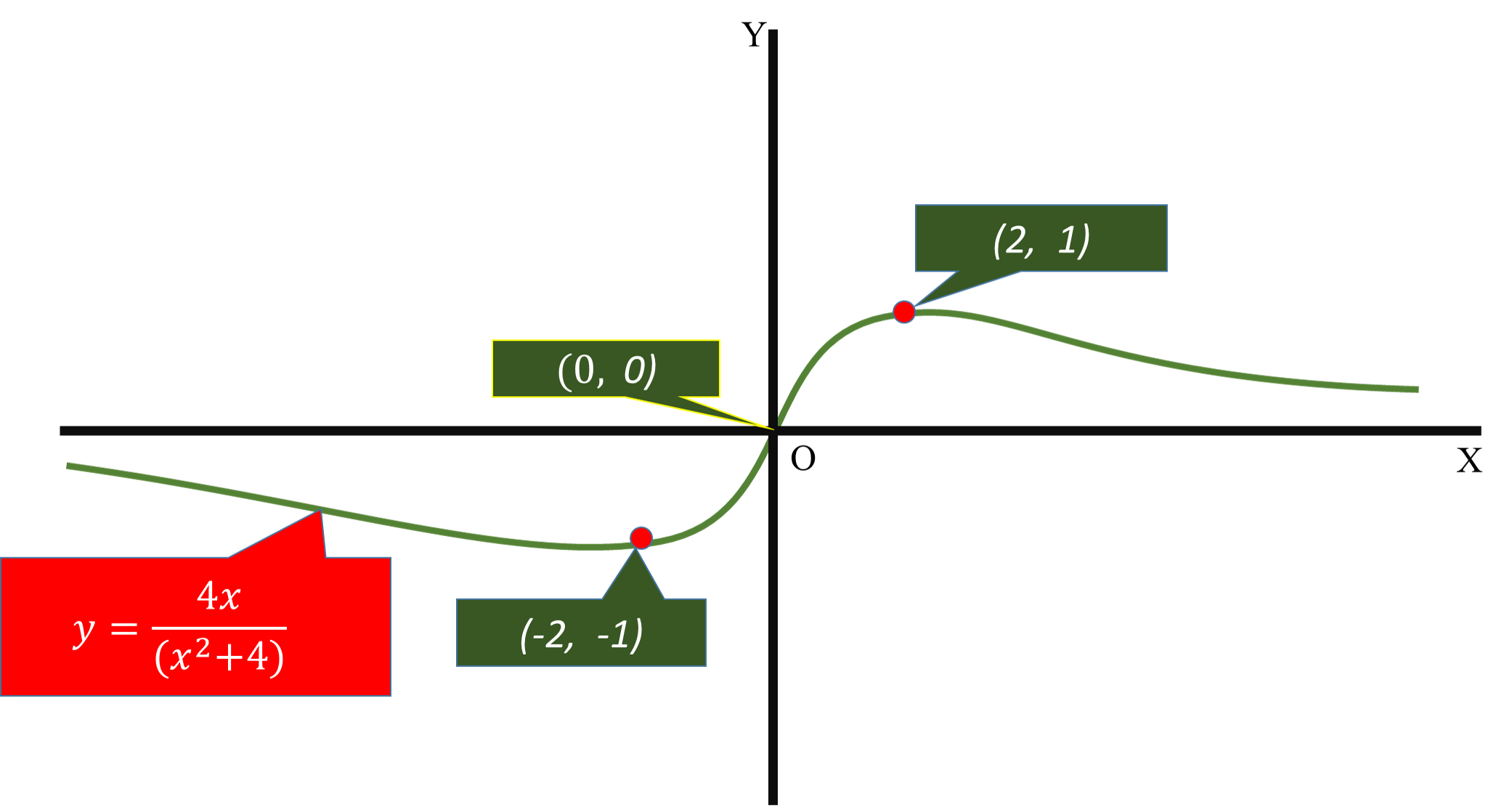How do you find the maximum, minimum and inflection points and concavity for the function #f(x) = (4x)/(x^2+4)#?
1 Answer
#color(red)(x=2)#
#color(red)(x=-2)#
Explanation:
Given -
#f(x)=(4x)/(x^2+4)#
Find the first Derivative.
#f^'(x)={[(x^2+4)(4)]-[(4x)(2x)]}/(x^2+4)^2#
#f^'(x)=(4x^2+16-8x^2)/(x^2+4)^2#
#f^'(x)=(-4x^2+16)/(x^2+4)^2#
Find the Second Derivative
#f^''(x)={[(x^2+4)^2(-8x)]-[(-4x^2+16)(2)(x^2+4)(2x)]}/[(x^2+4)^2]^2#
#f^''(x)={[(x^2+4)^2(-8x)]-[4x(-4x^2+16)(x^2+4)]}/(x^2+4)^4#
#f^''(x)={(x^2+4)[(x^2+4)(-8x)]-[4x(-4x^2+16)]}/(x^2+4)^4#
#f^''(x)={[(x^2+4)(-8x)]-[4x(-4x^2+16)]}/(x^2+4)^3#
#f^''(x)= (-8x^3-32x+16x^3-64x)/(x^2+4)^3#
#f^''(x)=(8x^3-96x)/(x^2+4)^3#
To find the Maxima and Minima, set the 1st derivative equal to zero.
#f^'(x)=0 => (-4x^2+16)/(x^2+4)^2=0#
#-4x^2+16=0#
#x^2=(-16)/(-4)=4#
#x=+-sqrt4#
#color(red)(x=2)#
#color(red)(x=-2)#
At
#f^''(x)=(8x^3-96x)/(x^2+4)^3=[8(2)^3-96(2)]/[(2)^2+4]^3=(64-192)/1728=(-128)/1728<0#
At
Hence the function has a maximum at
At
#f^''(x)=(8x^3-96x)/(x^2+4)^3=[8(-2)^3-96(-2)]/[(-2)^2+4]^3=(64+192)/1728=(256)/1728<0#
At
Hence the function has a minimum at


